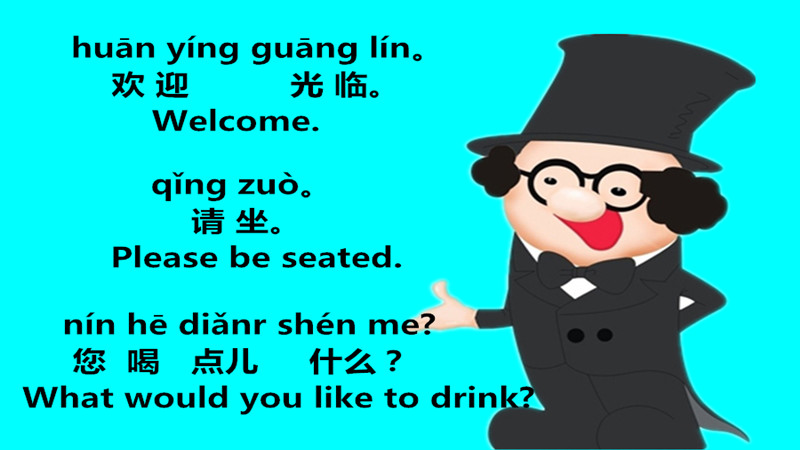1.在教室 In the classroom
她 是 谁?
Who is she?
¿Quién es ella?
Qui est-elle ?
من هي؟
Кто она?
她 是 我 的 汉语 老师,她 叫 李月。
She is my Chinese teacher, and her name is Li Yue.
Ella es mi profesora de chino, y se llama Li Yue.
C'est ma professeure de chinois, elle s'appelle Li Yue.
هي معلمتي للغة الصينية، اسمها لي يوي.
Она моя преподавательница китайского, её зовут Ли Юэ.

2.在图书馆 In the library
你 是 哪 国 人?
Which country are you from?
¿De qué país eres?
De quel pays es-tu ?
من أي دولة أنت؟
Из какой страны ты?
我 是 美国 人。你 呢?
I am American. How about you?
Soy estadounidense. ¿Y tú?
Je suis américain. Et toi ?
أنا أمريكي. وماذا عنك؟
Я американец. А ты?
我 是 中国 人。
I am Chinese.
Soy chino.
Je suis chinois.
أنا صيني.
Я китаец.
Click here to get a hard copy of this book

看照片 Looking at the photo
他 是 谁?
Who is he?
¿Quién es él?
Qui est-il ?
من هو؟
Кто он?
他 是 我 同学。
He is my classmate.
Él es mi compañero de clase.
C'est mon camarade de classe.
هو زميلي في الصف.
Он мой одноклассник.
她 呢?她 是 你 同学 吗?
What about her? Is she your classmate?
¿Y ella? ¿Es tu compañera de clase?
Et elle ? Est-ce ta camarade de classe ?
وماذا عنها؟ هل هي زميلتك في الصف؟
А она? Она твоя одноклассница?
她 不 是 我 同学,她 是 我 朋友。
She is not my classmate; she is my friend.
Ella no es mi compañera de clase; es mi amiga.
Ce n'est pas ma camarade de classe, c'est mon amie.
هي ليست زميلتي في الصف، هي صديقتي.
Она не моя одноклассница, она моя подруга.

听录音并跟读,注意声母发音的区别 Listen to the recording and read after it. Pay attention to the differences between the initials.
| zhī shi | chú xī | shēng rì | shàng chē |
| rèn shi | cháng shí | shì shí | chāo rén |
| rán shāo | rè nao | chū chāi | cháng chéng |
| shǒu shù | shāng chǎng | chāo shì | chōng zhí |

听录音并跟读,注意前后鼻音发音的区别 Listen to the recording and read after it. Pay attention to the differences between the alveolar and velar nasals.
| an | ang |
| ian | iang |
| uan | uang |
| en | eng |
| in | ing |
| uen | ueng |
“一”的变调 Tone Sandhi of "一(yī)" (1) ”一“在第一、二、三声音节前变成第四声 When "一" is followed by a syllable in the first, second or third tone, it changes into the fourth tone.
| yì zhāng | yì tiáo | yì zhǒng |
| one sheet/piece | one (long) piece | one type |
(2) ”一“在第四声音节前变成第二声 When "一" is followed by a syllable in the fourth, it changes into the second tone.
| yí dìng | yí kuài |
| sure, certainly | one piece |
(3)”一“单用或表示数字时不变调 When "一" is used alone or in a number, its otne doesn't change.
| dì yī | yī èr sān | xīng qī yī | shí yī | bǎi fēn zhī yī |
| first | one,two,three | Monday | eleven | one percent |

听录音并跟读,注意y、w 的用法 Listen to the recording and read after it. Pay attention to the use of y and w.
| yóu yǒng | yǒu yì | yīn yuè | yuán yīn |
| qīng wā | yǐng xīng | yīng xióng | wēi xiǎn |
| guó wài | yīn tiān | yǔ yán | wǎng wǎng |
| wǎn yàn | yé ye | yíng yǎng | wǒ men |

Click here to get a hard copy of this book






